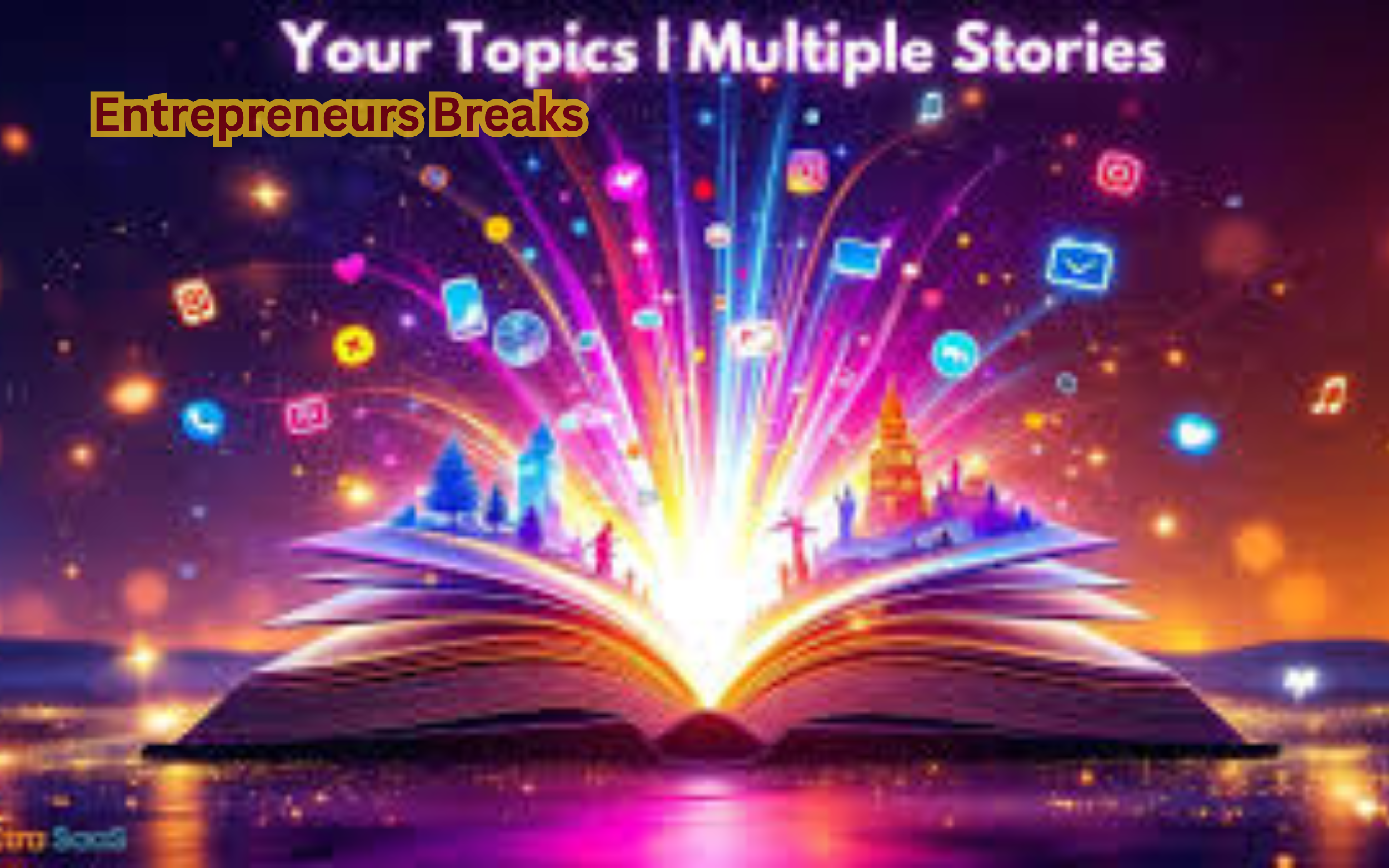Your Topics | Multiple Stories Enhance Learning: A Comprehensive Guide

The Your Topics | Multiple Stories approach enhances learning by presenting a subject through multiple perspectives, allowing for a deeper, more comprehensive understanding.
This method is commonly used in education, storytelling, and research, as it provides learners with a broader outlook on complex topics.
By engaging with multiple stories within a single theme, individuals develop critical thinking skills, empathy, and analytical abilities.
This approach is particularly effective in history, literature, and social sciences, where understanding different viewpoints leads to a richer comprehension of events and ideas.
Additionally, multiple stories improve knowledge retention, as learners relate to diverse narratives rather than a singular viewpoint.
Incorporating Your Topics | Multiple Stories into learning ensures a more inclusive and well-rounded educational experience.
By analyzing topics through various lenses, individuals can grasp intricate details, connect different ideas, and develop problem-solving skills.
This method ultimately fosters a lifelong learning mindset, encouraging curiosity and adaptability in an ever-evolving world.
What Is Your Topics | Multiple Stories?
Your Topics | Multiple Stories is an educational approach that involves exploring a subject from different angles through various narratives.
This method allows learners to gain a broader understanding by seeing how different perspectives contribute to the overall topic.
Whether in literature, history, or science, presenting multiple stories provides depth and diversity in learning.
This concept is widely used in academic institutions, storytelling, and media platforms to enhance knowledge retention and comprehension.
By incorporating various stories within a single topic, learners can connect information in a more engaging and meaningful way.
This not only improves understanding but also helps in critical thinking and problem-solving skills.
The Your Topics | Multiple Stories approach ensures that learning is inclusive and reflects the complexity of real-world scenarios.
What Is It Called When a Story Has Multiple Stories?
When a single narrative contains multiple interwoven stories, it is often referred to as a frame story, nested narrative, or multi-narrative structure.
This literary technique allows for several perspectives or storylines to be presented within the same work, offering readers a more profound and layered experience.
Classic examples include “One Thousand and One Nights,” “Canterbury Tales,” and “Cloud Atlas”, where multiple narratives unfold within a larger framework.
This structure enhances the depth of the main theme and helps the audience see different viewpoints within a unified setting.
In learning contexts, multi-story approaches provide a richer educational experience by allowing students to understand complex concepts through different scenarios and viewpoints.
What Are Multiple Stories? How Do You Make Multiple Stories?
Multiple stories refer to different narratives that either exist independently or interconnect to form a broader theme.
In education, storytelling, and journalism, multiple stories provide varied insights, making learning more engaging and informative.
To create multiple stories effectively:
- Identify the central topic and break it down into subtopics.
- Develop different perspectives or viewpoints to explore these subtopics.
- Ensure each story has a unique angle while maintaining a common theme.
- Use storytelling techniques such as character development, conflicts, and resolutions to make them compelling.
- Link the stories together by a shared element, whether through characters, themes, or setting.
By using this approach, learners and readers can gain a holistic understanding of any given subject, leading to enhanced comprehension and retention.
Your Topics | Multiple Stories Enhance Learning
Using Your Topics | Multiple Stories in education and storytelling significantly improves comprehension.
When learners encounter a concept through different narratives, they are more likely to understand it in depth.
This approach is particularly beneficial in:
- History and social sciences, where different perspectives highlight varying experiences.
- Literature and media, where multiple viewpoints enrich storytelling.
- Science and technology, where case studies and examples provide practical insights.
By exposing students to multiple stories, educators foster critical thinking and promote an open-minded approach to learning.
The Your Topics | Multiple Stories method encourages deeper engagement and retention of knowledge.
The Effect of Multiple Stories on Individual Development
Exposure to multiple stories influences personal growth by broadening perspectives and enhancing emotional intelligence.
When individuals read or listen to different narratives, they:
- Develop critical thinking skills by evaluating diverse viewpoints.
- Improve empathy and cultural awareness through different experiences.
- Strengthen problem-solving abilities by understanding various outcomes and solutions.
This learning method is particularly useful in shaping well-rounded individuals who can adapt to different situations and appreciate diverse viewpoints in personal and professional settings.
The Power of Storytelling in Understanding Topics
Storytelling has long been recognized as a powerful tool for learning.
When combined with multiple stories, it allows individuals to grasp complex ideas more easily.
Your Topics | Multiple Stories make abstract concepts more relatable by offering real-world examples and experiences.
This method is commonly used in educational settings, corporate training, and media storytelling, proving its effectiveness across various fields.
Multiple Stories Offer Diverse Perspectives
One of the biggest advantages of Your Topics | Multiple Stories is that it offers diverse perspectives on a single topic.
This approach ensures:
- Greater inclusivity by incorporating voices from different backgrounds.
- A balanced understanding by presenting multiple viewpoints.
- Stronger critical thinking skills by challenging assumptions and biases.
By considering multiple stories, individuals develop a more comprehensive and nuanced understanding of any subject.
Topics That Benefit from Multiple Story Approaches
Several subjects greatly benefit from the Your Topics | Multiple Stories method, including:
- History: Understanding past events from various perspectives.
- Science: Exploring discoveries through different case studies.
- Literature: Analyzing different interpretations of the same theme.
- Business: Learning from multiple success and failure stories.
These topics require a multifaceted approach to ensure a well-rounded learning experience.
Creating and Finding Your Topics | Multiple Stories
Creating and identifying Your Topics | Multiple Stories involves:
- Selecting a broad topic and breaking it into subtopics.
- Exploring different perspectives, case studies, and real-life examples.
- Connecting various stories to form a cohesive learning experience.
- Using educational resources, books, documentaries, and interviews to gather different viewpoints.
By following these steps, educators, writers, and learners can build a richer, more engaging approach to any subject.
The Impact of Multiple Stories on Personal Growth
Experiencing multiple stories significantly influences personal growth by:
- Broadening worldviews and reducing biases.
- Enhancing problem-solving skills through diverse experiences.
- Increasing emotional intelligence by fostering empathy and understanding.
This storytelling method is invaluable in shaping individuals into more insightful and open-minded thinkers.
Conclusion
Your Topics | Multiple Stories Enhance Learning is a transformative approach that makes education more dynamic, engaging, and insightful.
By presenting various perspectives within a single subject, learners develop critical thinking skills, deeper comprehension, and greater empathy.
Whether used in education, storytelling, or personal development, this method enriches the learning experience by offering a comprehensive and multi-dimensional understanding.
As the world continues to evolve, embracing multiple stories in learning will remain essential for fostering well-rounded, informed individuals.










